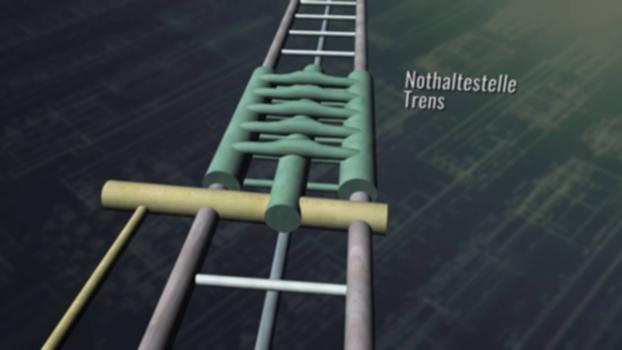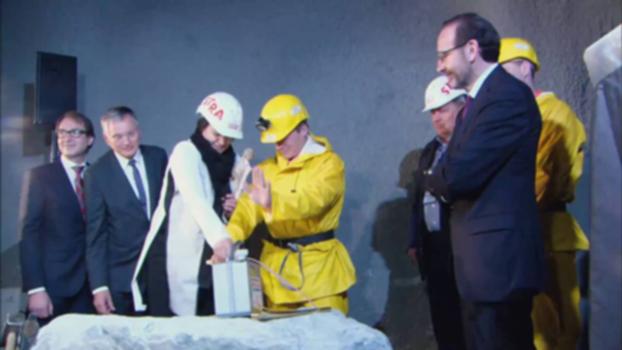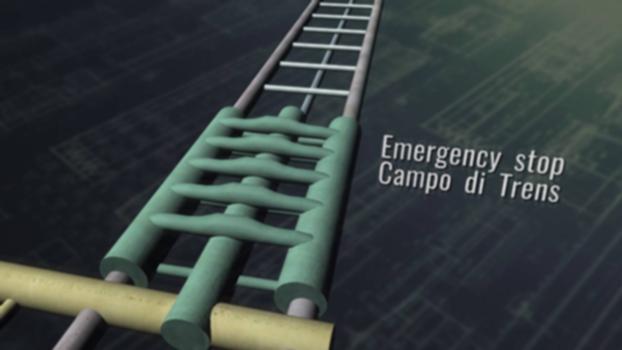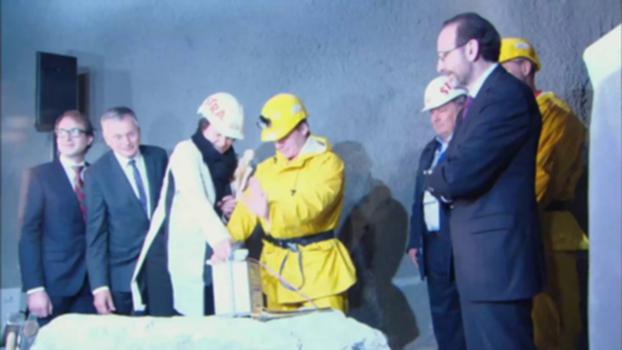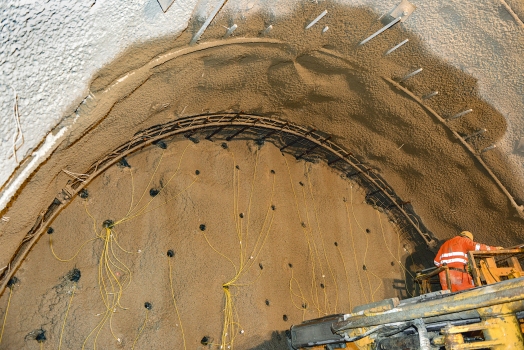General Information
Project Type
| Function / usage: |
Railroad (railway) tunnel |
|---|---|
| Structure: |
Tunnel |
Location
| Location: |
Innsbruck, Tyrol, Austria Fortezza, Bolzano/Bozen, Trentino-South Tyrol, Italy |
|---|---|
| Part of: | |
| Coordinates: | 47° 14' 44.54" N 11° 24' 1.19" E |
| Coordinates: | 46° 47' 29.32" N 11° 36' 25.09" E |
Technical Information
Dimensions
| length | 55 km |
Design Loads
| design speed | 250 km/h |
Cost
| Lot AP164 / B0111 (Tulfes-Pfons) | ||
|---|---|---|
| cost of lot | Euro 377 302 638.72 | |
| Lot AP174 / B0115 (Eisackunterquerung) | ||
| cost of lot | Euro 301 308 879.98 | |
Case Studies and Applied Products
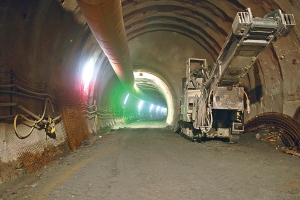
Brenner Base Tunnel will be the world’s second longest railway tunnel
The Brenner Base Tunnel (BBT) is a joint project built by Italy and Austria along the Munich-Verona axis. The planned 55 km long tunnel will be the world's second longest railway tunnel after the Gotthard Ba ... [more]
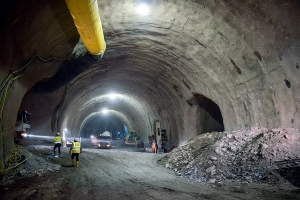
Brenner Base Tunnel – Advancement in highly converging rock mass
At 1,371 m above sea level, the Brenner Pass is the most important connection between Central Europe and Italy, carrying more than a third of all transalpine traffic. The existing railway line from Innsbruck ... [more]
Chronology
| 18 April 2011 | Start of building phase (Phase III) |
|---|
Excerpt from Wikipedia
The Brenner Base Tunnel (German:Brennerbasistunnel; Italian:Galleria di base del Brennero) is a planned 55-kilometre-long (34 mi) railway tunnel through the base of the Eastern Alps beneath the Brenner Pass. It will run from near Innsbruck, in Austria, to Fortezza, in Italy, replacing part of the current Brenner railway. The line is part of Line 1, the Berlin to Palermo route, of Trans-European Transport Networks (TEN-T).
The Brenner Pass, in the Alps at the border between Austria and Italy, is one of the most important traffic connections between northern and southern Europe, and the motorway going over it is infamous for its frequent traffic jams. Pollution from this traffic is a major concern.
The hope is to relieve this situation by greatly improving the railway connection between North Tyrol and South Tyrol with the new tunnel, which will allow trains to cross the Alps much faster. Currently, speeds in the Brenner region barely exceed 70 km/h (43 mph) due to the steepness of the existing tracks, which cross the pass at an elevation of 1,371 metres above sea level.
The travel time from Innsbruck to Bolzano will be reduced from 2 hours to 50 minutes.
The project is funded by Austria and Italy, and a contribution by the European Union. Due to the magnitude of the project (it will be the world's second-longest tunnel, after the Gotthard Base Tunnel), the funding promised so far will not suffice for the estimated costs. The tunnel is scheduled to be completed in 2028.
Background
Brenner Base Tunnel Legend Lower Inn railwayfrom Rosenheim Lower Inn railwayto Innsbruck bridge on Inn Innsbruck bypassNorth portal Ampass shaft Brenner Base shaftNorth portal to Innsbruck Ahrental shaft Wolf shaft Italy-Austria border Mauls/Mules shaft Aicha/Aica shaft Brenner Base TunnelSouth portal Brenner railwayto Brenner/Brennero Franzensfeste/Fortezza Brenner railwayto Brixen Riggertal/Val Riga shaft Albeins/Albes shaft Eisack/Isarco bridge Brenner Railway Klausen/Chiusa shaft Brenner railwayto Waidbruck/Ponte Gardena Brenner railwayto Bolzano/Bozen Laives/Leifers-Steinmannwald shaft Brenner railwayto Bolzano/Bozen Brenner railwayfrom Verona
The passenger and freight traffic across the Alps has increased greatly in recent years and further growth is forecast. Austria is a key country in movement of freight between northern and southern Europe and between eastern and western Europe. The Brenner region is very politically sensitive with respect to both local and cross-border transport issues. Between 1970 and 1999, highway freight increased seven-fold. (3 million to 22 million tonnes) In 1990, 70% of the freight from eastern Europe was transported by rail and the remainder by trucks. These proportions were expected to reverse by 2010.:182ff About three-quarters of traffic through the Brenner Pass is currently carried by road transport. Local residents have long fought for relief from the associated pollution. The construction of a rail tunnel is considered by its proponents to be necessary for a shift of freight traffic from road to rail.
The railway line from Innsbruck to Bozen was built between 1860 and 1867. Tight curve radii and gradients of up to 2.5% complicate rail operations. However, improvements on the Italian side in recent years to the existing line, which were completed in late 2008, allow the line theoretically to accommodate 240 trains per day. The grades were not significantly improved.
The new Brenner line would have a maximum gradient of 1.2% and the gradient in the tunnel would be about 0.7%. Thus, a locomotive would be capable of hauling more than double the weight. The new line (the base tunnel together with the southern approach from Waidbruck/Ponte Gardena to Franzensfeste/Fortezza) would cut travel time between Innsbruck and Bolzano from about two hours today to less than half that.
Project
Main tunnel
The 55 kilometres (34 mi) long, twin-tube tunnel begins in the Innsbruck suburb of Wilten and penetrates the Alps reaching a height of about 840 metres (2,760 ft) above sea level (ASL). The tunnel will be up to 1,600 m (5,200 ft) below the surface at its deepest point in the gneiss section stretching south from the Italian border. Since under the most recent plan the tunnel starts as a twin-tube tunnel, the junction already prepared in the Inntal tunnel on the Innsbruck bypass will not be used. Instead, a costly diversion with several branches is planned.
The volume of rock to be excavated during the construction of the tunnel is estimated at 21 million cubic meters, of which approximately 60% will be incurred in Austria, as about 60% of the tunnel will be in Austria. A part of the spoil will be used as fill for the approach lines and another part of the spoil material is used to produce the concrete segment for the final lining of the tunnel. The main tunnels will have a circular cross section with a diameter of approx. 8.1 m.
According to current planning the apex of the tunnel will be at the border at an altitude of about 810 m (2,660 ft) ASL, although an apex farther south would have been lower. The placing of the apex at the border is set out in the treaty between Austria and Italy. As justification for this choice it is stated that this will allow Austrian water to run in the tunnel to Austria and Italian water to Italy. The Austrian section of the tunnel will have a maximum gradient of 0.74% and the Italian section will have a gradient of 0.67%.
Northern approach
On its north end, the base tunnel (BBT) has two entrances, which must go underground a few kilometres before the junction with the main tunnels, and will also be built as part of the BBT. One route leads from the main Innsbruck station under Bergisel and the other connects with the Innsbruck bypass. This route adds about 8 kilometres (5.0 mi) more to the length of the tunnel than the Innsbruck station route; with it included, the BBT, at 62.7 kilometres (39.0 mi), would become the longest continuous railroad tunnel in the world. However, if the Axentunnel extension is added to the Gotthard base tunnel, its length would become 75 kilometres (47 mi), allowing it to reclaim the 'longest tunnel' title.
The northern approach from Munich within Germany is the 165 kilometres (103 mi) Grafing–Rosenheim–Kufstein route. The "Brenner Nordzulauf" (Brenner northern link) project aims to construct a high-speed line for speeds of up to 230 km/h (143 mph) between Grafing and Brannenburg in addition to the existing line, adapting the route's capacity to the projected increase as a result of the BBT. The project has reached in-depth planning stages but suffers from lacking support by locals. A more direct route between Munich and Innsbruck, for example, via Garmisch-Partenkirchen, Mittenwald and Seefeld was not pursued, though it could have shortened the Munich Innsbruck line to 129 kilometres (80 mi).
In Austria, a new double-track high-speed line supplements the Lower Inn Valley railway between Wörgl and Baumkirchen. It manages to cut travel time between Munich and Innsbruck from 1:50 via the old tracks to merely 0:55 using the high-speed line. About 32 kilometres (20 mi) of the 40 kilometres (25 mi) line through the Lower Inn Valley (Unterinntal) is built underground, in troughs, or under snow sheds. Noise and vibration mitigation is accomplished by the use of 80,000 square metres (860,000 sq ft) of elastomer in a mass-spring system. The segment's track superstructure is load class E5. It is capable of handling 260-300 trains per day. This section was opened 2012-12-09. Planning is under way on the continuation of this line to the German border at Brannenburg.
The southern approach for the BBT will be 189 kilometres (117 mi) long and reach from the southern portal of the tunnel in Franzensfeste/Fortezza to Verona. Planning has been completed for some sections.
The Italian government has budgeted €6 billion for the construction of the entire southern approach. Critics consider this estimate too optimistic and fear that the project will fail because of high construction costs.
History
The Brenner tunnel is the most important link in the Berlin–Palermo railway axis, a series of projects that will create a single railway line from Berlin in Germany to Palermo in Sicily.
Schedule history
Early in the preliminary planning, at a Brussels meeting in June 2005, BBT SE (Brenner Base Tunnel Societas Europae), presented an interim status report. Expectations following the meeting were that the project could be finalized and the pilot tunnel started by 2006. The target for the tunnel to start service was 2015.
In 2007 a construction time line with a 2022 finish date was specified in a memorandum signed by the Austrian and Italian ministers of transport.
By May 2009 the completion date was changed to be by 31 December 2025.
Funding history
On December 2008 Antonio Tajani, the European commissioner for transport, approved funds totalling €1.7 billion to finance 11 railway projects that together should establish two major routes across the continent.
In May 2009 it was confirmed that final go-ahead for the project had been given.
The final estimated cost was put at €6bn at 2006 levels.
Construction history
In the summer of 2006 work started on a pilot tunnel to run along the line of the future tunnel and to be used for removing water and spoil during the major construction phase. Construction of the pilot tunnel between 2006 and 2009 was estimated to cost €430 million and would be 50% EU funded.
The final segment of a tunnel on the Tulfes-Pfons Lot was completed in July 2017.
Design
The final design will consist of two tunnels, 55 kilometres (34 mi) long. A centre tunnel 12 metres (39 ft) below the two primary tunnels will be used during construction as a guide tunnel to determine geological conditions, and later for drainage and emergency access. There will be a cross over between the tunnels every 333 metres (1,093 ft). Multi-function stations will be located at Trens (in Freienfeld), Steinach, and a third station towards the northern end of the tunnel to provide operational and emergency services. ETCS Level 2 will be installed to provide train control.
Specifications
- Length:
- Total tunnel length from the Innsbruck bypass to Fortezza/Franzensfeste: 64 km (39.768 mi)
- Length from the Innsbruck portal to the Fortezza/Franzensfeste portal: 55 km (34.175 mi)
- Diameter of each of the single-track tubes: 8.1 m (27 ft)
- Distance between cross passage tunnels: 333 m (1,093 ft)
- Elevation at highest point: 794 m (2,605 ft)
- Maximum overburden: 1,600 m (5,200 ft)
- Start of construction: 1999 (preparations), 2007 (exploratory section), 2011 (main tunnel)
- End of construction: 2025
- Total cost: €8.585 billion (US$11.485 billion as of February 2013)
- Trains per day: 200–250
- Electrification System: 25 kV 50 Hz AC
- Control and command system: ETCS Level 2
- Operating speed: 250 km/h (155 mph) for passenger trains and 160 km/h (99 mph) for freight trains
Text imported from Wikipedia article "Brenner Base Tunnel" and modified on July 23, 2019 according to the CC-BY-SA 4.0 International license.
Participants
- COLLINI Lavori S.p.A.
- Consorzio Cooperative Costruzioni CCC Società Cooperativa
- Strabag AG
- STRABAG S.p.A.
Relevant Web Sites
Relevant Publications
- (2019): 15 km TBM exploratory tunnel excavation in the construction Lot H33 of the Brenner Base Tunnel. In: Geomechanics and Tunnelling, v. 12, n. 5 (October 2019), pp. 595-603.
- (2010): Aicha-Mauls on the Brenner Base Tunnel - status of the works and results / Aicha-Mauls am Brenner Basistunnel - Stand der Arbeiten und Ergebnisse. In: Geomechanics and Tunnelling, v. 3, n. 5 ( 2010), pp. 520-533.
- (2007): Alpenquerende Tunnel: Projektübersicht und Materialbewirtschaftung beim Brenner Basistunnel. In: Beton- und Stahlbetonbau, v. 102, n. 1 (January 2007), pp. 19-23.
- (2015): Aufbereitung und Wiederverwertung von Tunnelausbruchmaterial beim Brenner Basistunnel. In: Beton- und Stahlbetonbau, v. 110, n. 12 (December 2015), pp. 832-844.
- (2012): Auswirkungen der geometrischen Lage der Tunnel auf die Gebirgsplastifizierung und die Spritzbetonschale beim Brenner Basistunnel. In: Beton- und Stahlbetonbau, v. 107, n. 11 (November 2012), pp. 735-748.
- About this
data sheet - Structure-ID
20041770 - Published on:
01/01/2009 - Last updated on:
28/05/2021


